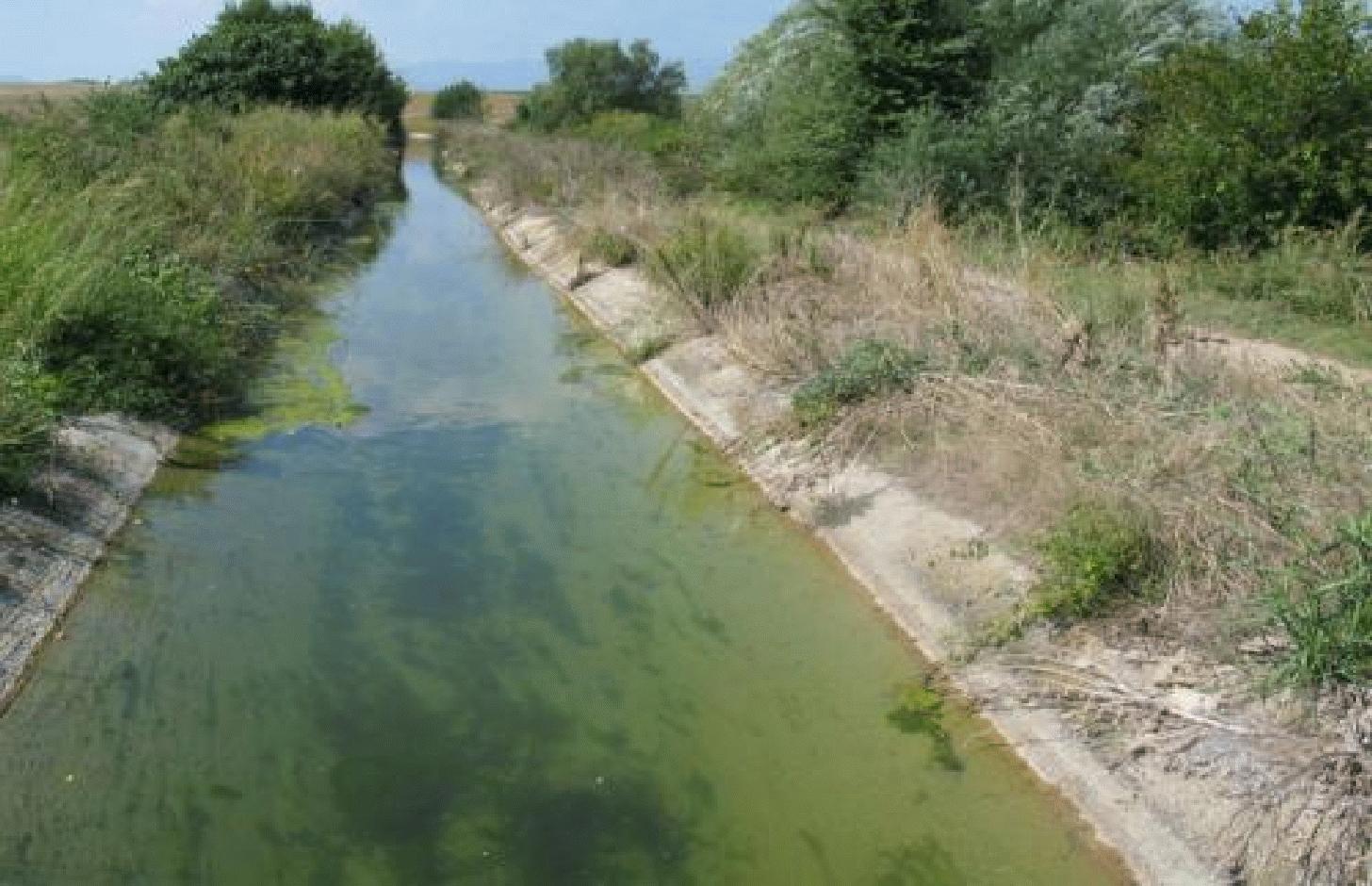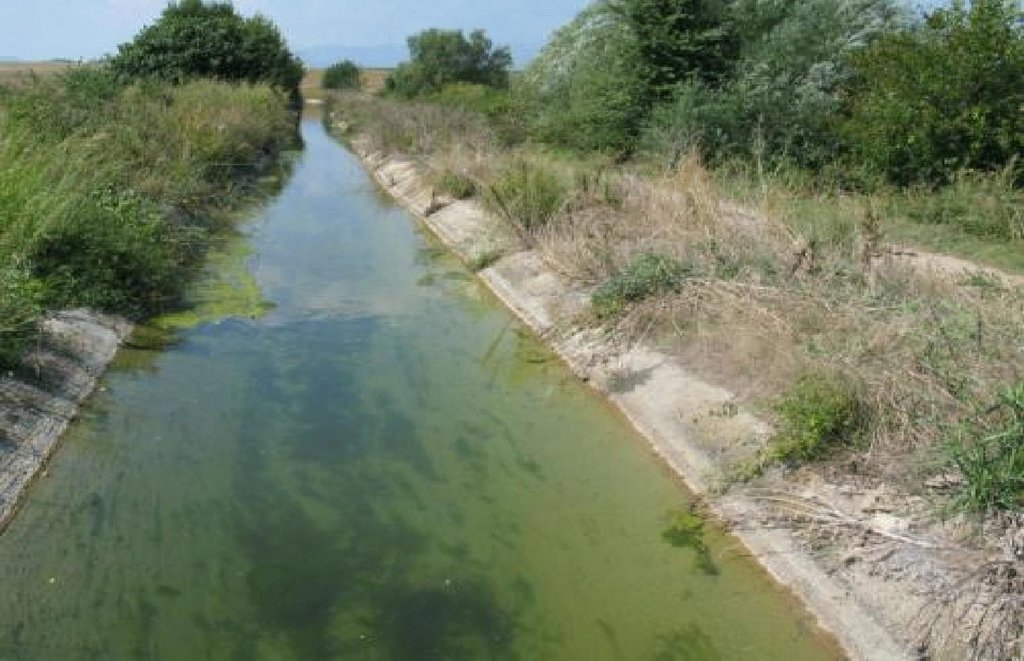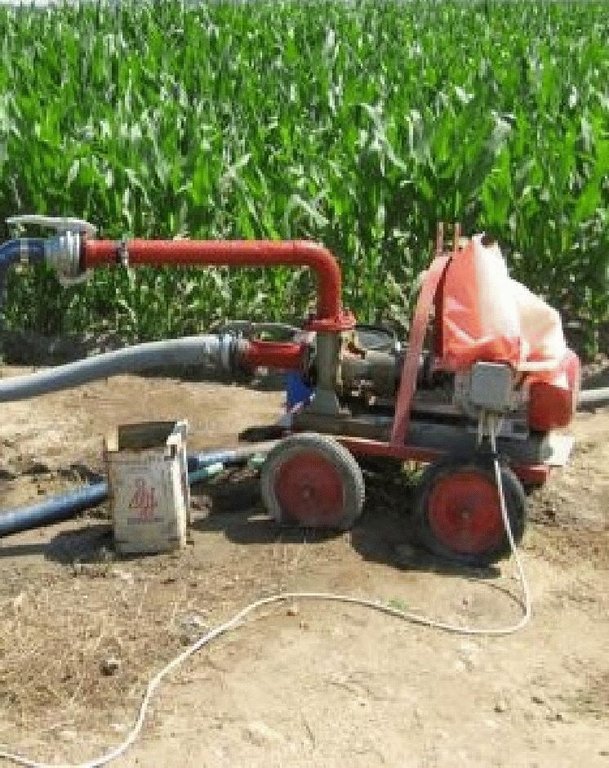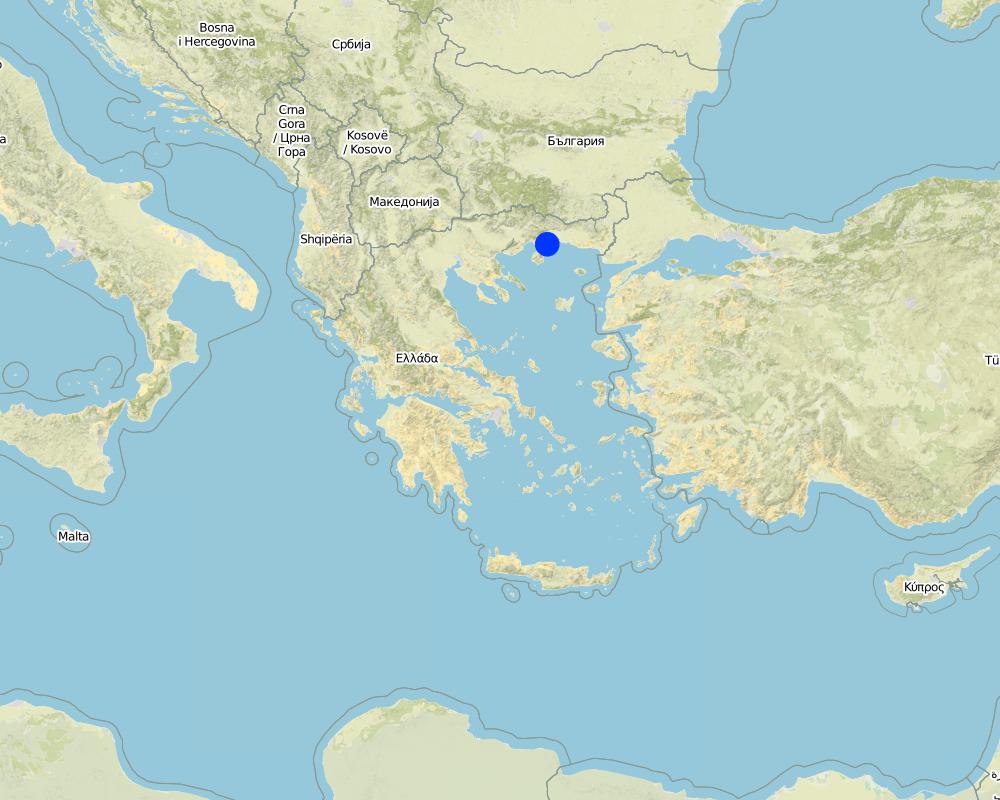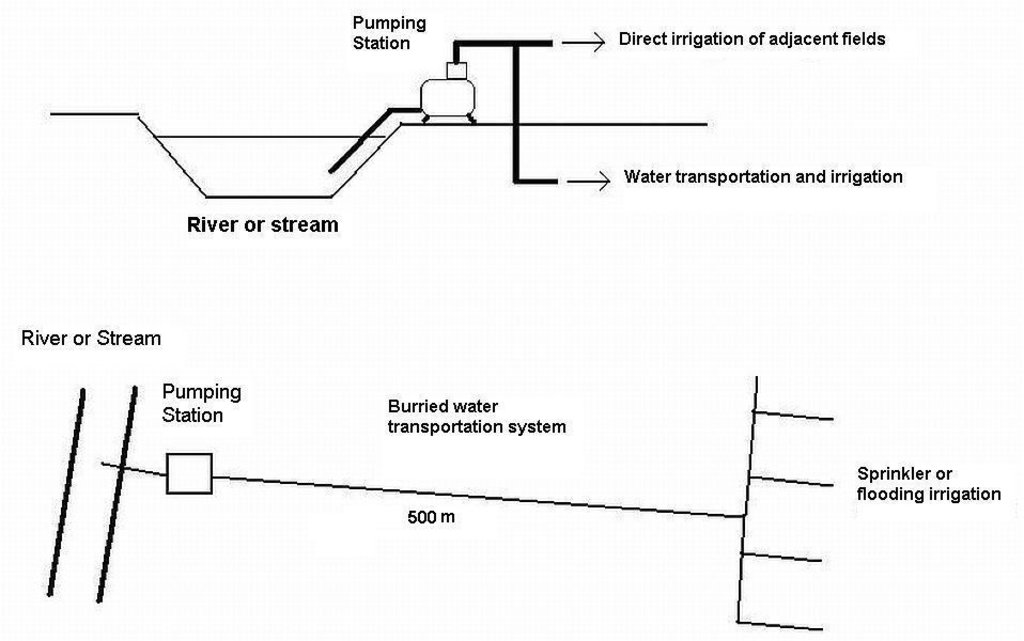Transport of freshwater from local streams [Greece]
- Creation:
- Update:
- Compiler: John Gkiougkis
- Editor: –
- Reviewers: Deborah Niggli, Alexandra Gavilano
Μεταφορά γλυκού από γειτονικά αρδευτικά κανάλια
technologies_1042 - Greece
View sections
Expand all Collapse all1. General information
1.2 Contact details of resource persons and institutions involved in the assessment and documentation of the Technology
SLM specialist:
Pechtelidis Alexandros
Democritus University of Thrace
Greece
Name of project which facilitated the documentation/ evaluation of the Technology (if relevant)
DESIRE (EU-DES!RE)Name of the institution(s) which facilitated the documentation/ evaluation of the Technology (if relevant)
Democritus University of Thrace (Democritus University of Thrace) - Greece1.3 Conditions regarding the use of data documented through WOCAT
The compiler and key resource person(s) accept the conditions regarding the use of data documented through WOCAT:
Yes
1.5 Reference to Questionnaire(s) on SLM Approaches (documented using WOCAT)

Combating Soil Salinization [Greece]
Use of freshwater to combat soil salinization.
- Compiler: John Gkiougkis
2. Description of the SLM Technology
2.1 Short description of the Technology
Definition of the Technology:
Freshwater transport from local streams for irrigation purposes, in order to replace the traditional form of irrigation (by pumping saline groundwater from wells).
2.2 Detailed description of the Technology
Description:
In low-lying regions suffering from overuse of the ground water for irrigation and seawater intrusion, pumping groundwater is detrimental and results in soil degradation (salinization) and reduced plant growth.
Purpose of the Technology: For this reason, freshwater is transported over distances of up to 500 m (or more) from surface streams, for irrigation using water of better quality. In this way, overexploitation of the aquifer is being reduced.
Establishment / maintenance activities and inputs: The pumps transfer water from canals or streams for irrigation purposes. A pumping station (10HP), pipes (PP-R, Ø 1100mm) for water transport and diesel or electricity for pump operation are the major items needed to replace groundwater with freshwater irrigation. However, annual maintenance of the pump and network is necessary.
Natural / human environment: The majority of families living in the research area make their living mostly from agricultural activities but also from livestock. Croplands are dominantly irrigated by wells (groundwater) and only those which are close to streams are irrigated with freshwater. Owing to over-pumping of the aquifer in order to irrigate the crop fields, there has been seawater intrusion over the past years. As a result, irrigation with groundwater led to saline soils. The group affected by this process comprises farmers who are now beginning to understand the extent of the desertification problem in the area. The degradation process significantly affects the quality of life of the local people. Saline soils lead to low productivity and thus to lower incomes (causing poverty) and thus an increase in social unrest. Although the farmers are totally aware of the on-going degradation problem that affects their fields and their livelihoods, they seem to be unwilling to change the way they irrigate their fields (with groundwater) as long as they do not have an alternative source of irrigation such as freshwater from local streams. The lack of information about how the salt-affected fields can be restored also makes the farmers believe that this situation is permanent and will extend over a wider area.
2.3 Photos of the Technology
2.5 Country/ region/ locations where the Technology has been applied and which are covered by this assessment
Country:
Greece
Region/ State/ Province:
Prefecture of Xanthi
Further specification of location:
Eastern Macedonia and Thrace
Comments:
Total area covered by the SLM Technology is 9.59 km2.
Areas adjacent to freshwater surface streams.
Map
×2.6 Date of implementation
If precise year is not known, indicate approximate date:
- less than 10 years ago (recently)
2.7 Introduction of the Technology
Specify how the Technology was introduced:
- during experiments/ research
3. Classification of the SLM Technology
3.2 Current land use type(s) where the Technology is applied
Land use mixed within the same land unit:
Yes
Specify mixed land use (crops/ grazing/ trees):
- Agroforestry

Cropland
- Annual cropping
- Tree and shrub cropping
Annual cropping - Specify crops:
- cereals - maize
- fibre crops - cotton
- fodder crops - clover
- wheat
Tree and shrub cropping - Specify crops:
- olive
Number of growing seasons per year:
- 1
Specify:
Longest growing period in days: 100Longest growing period from month to month: April to August
Comments:
Major land use problems (compiler’s opinion): Soil salinization and sodification.
Major land use problems (land users’ perception): Soil salinization.
3.4 Water supply
Comments:
Water supply: mixed rainfed - irrigated, full irrigation
3.5 SLM group to which the Technology belongs
- irrigation management (incl. water supply, drainage)
3.6 SLM measures comprising the Technology

management measures
- M7: Others
Comments:
Main measures: management measures
3.7 Main types of land degradation addressed by the Technology

chemical soil deterioration
- Cs: salinization/ alkalinization
Comments:
Main type of degradation addressed: Cs: salinisation / alkalinisation
Main causes of degradation: disturbance of water cycle (infiltration / runoff) (overexploitation of groundwater), over abstraction / excessive withdrawal of water (for irrigation, industry, etc.) (overexploitation of groundwater), other natural causes (avalanches, volcanic eruptions, mud flows, highly susceptible natural resources, extreme topography, etc.) specify (seawater intrusion in coastal aquifers of the area, poor soil drainage), inputs and infrastructure: (roads, markets, distribution of water points, other, …) (lack of freshwater supply network), increased pressure on groundwater for irrigation
Secondary causes of degradation: change in temperature (higher temperature), change of seasonal rainfall (reduced rainfall), droughts (climate change)
3.8 Prevention, reduction, or restoration of land degradation
Comments:
Main goals: prevention of land degradation
Secondary goals: mitigation / reduction of land degradation, rehabilitation / reclamation of denuded land
4. Technical specifications, implementation activities, inputs, and costs
4.1 Technical drawing of the Technology
Technical specifications (related to technical drawing):
Scheme showing the SLM technology application
Location: Eastern Nestos Delta River Basin. Prefecture of Xanthi
Date: 14/03/2010
Technical knowledge required for field staff / advisors: high
Technical knowledge required for land users: moderate
Main technical functions: water spreading, replacing saline groundwater with surface freshwater, reduce pressure/overexploitation on aquifer
Secondary technical functions: improvement of surface structure (crusting, sealing), improvement of topsoil structure (compaction), improvement of subsoil structure (hardpan), increase of infiltration, increase of groundwater level / recharge of groundwater
Agronomic measure: soil desalinization
Material/ species: freshwater
Remarks: salinity leaching
Author:
Alexandros Pechtelidis, Vas. Sofias 12, Xanthi, Greece
4.2 General information regarding the calculation of inputs and costs
other/ national currency (specify):
euro
If relevant, indicate exchange rate from USD to local currency (e.g. 1 USD = 79.9 Brazilian Real): 1 USD =:
0.7
4.3 Establishment activities
| Activity | Timing (season) | |
|---|---|---|
| 1. | construction of irrigation network |
4.4 Costs and inputs needed for establishment
| Specify input | Unit | Quantity | Costs per Unit | Total costs per input | % of costs borne by land users | |
|---|---|---|---|---|---|---|
| Labour | Labour | Irrigation network | 1.0 | 969.0 | 969.0 | 100.0 |
| Equipment | hire of an ecavator | Irrigation network | 1.0 | 1107.0 | 1107.0 | 100.0 |
| Equipment | Pumping station | Irrigation network | 1.0 | 3460.0 | 3460.0 | 100.0 |
| Construction material | Water transport pipes | Irrigation network | 1.0 | 100.0 | ||
| Other | Diesel fuel (1 Lt) | Liter | 1.0 | 1.4 | 1.4 | 100.0 |
| Other | Electricity (1 Kw) | Liter | 1.0 | 0.4 | 0.4 | 100.0 |
| Total costs for establishment of the Technology | 5537.8 | |||||
| Total costs for establishment of the Technology in USD | 7911.14 | |||||
Comments:
Duration of establishment phase: 1 month(s)
Life span of the irrigation network: Lifetime
4.5 Maintenance/ recurrent activities
| Activity | Timing/ frequency | |
|---|---|---|
| 1. | Network maintenance | annualy |
4.6 Costs and inputs needed for maintenance/ recurrent activities (per year)
| Specify input | Unit | Quantity | Costs per Unit | Total costs per input | % of costs borne by land users | |
|---|---|---|---|---|---|---|
| Labour | Labour | Irrigation network | 1.0 | 138.0 | 138.0 | 100.0 |
| Equipment | Hire of an ecavator | Irrigation network | 1.0 | 275.0 | 275.0 | 100.0 |
| Equipment | Pumpiong station | Irrigation network | 1.0 | 200.0 | 200.0 | 100.0 |
| Other | diesl fuel or erlectricity | Irrigation network | 1.0 | 1512.0 | 1512.0 | 100.0 |
| Total costs for maintenance of the Technology | 2125.0 | |||||
| Total costs for maintenance of the Technology in USD | 3035.71 | |||||
Comments:
The above costs are calculated on May, 2011.
4.7 Most important factors affecting the costs
Describe the most determinate factors affecting the costs:
Diesel or electricity price affects the final cost.
5. Natural and human environment
5.1 Climate
Annual rainfall
- < 250 mm
- 251-500 mm
- 501-750 mm
- 751-1,000 mm
- 1,001-1,500 mm
- 1,501-2,000 mm
- 2,001-3,000 mm
- 3,001-4,000 mm
- > 4,000 mm
Agro-climatic zone
- semi-arid
Thermal climate class: temperate. Mediterranean type climatic conditions
5.2 Topography
Slopes on average:
- flat (0-2%)
- gentle (3-5%)
- moderate (6-10%)
- rolling (11-15%)
- hilly (16-30%)
- steep (31-60%)
- very steep (>60%)
Landforms:
- plateau/plains
- ridges
- mountain slopes
- hill slopes
- footslopes
- valley floors
Altitudinal zone:
- 0-100 m a.s.l.
- 101-500 m a.s.l.
- 501-1,000 m a.s.l.
- 1,001-1,500 m a.s.l.
- 1,501-2,000 m a.s.l.
- 2,001-2,500 m a.s.l.
- 2,501-3,000 m a.s.l.
- 3,001-4,000 m a.s.l.
- > 4,000 m a.s.l.
Comments and further specifications on topography:
Altitudinal zone: 0-100 m a.s.l. (Below 10m (plain costal region))
Landforms: Plateau/plains (Plain costal region)
Slopes on average: Flat (Plain region)
5.3 Soils
Soil depth on average:
- very shallow (0-20 cm)
- shallow (21-50 cm)
- moderately deep (51-80 cm)
- deep (81-120 cm)
- very deep (> 120 cm)
Soil texture (topsoil):
- medium (loamy, silty)
- fine/ heavy (clay)
Topsoil organic matter:
- medium (1-3%)
- low (<1%)
If available, attach full soil description or specify the available information, e.g. soil type, soil PH/ acidity, Cation Exchange Capacity, nitrogen, salinity etc.
Soil fertility is low-medium
Soil drainage/infiltration is poor/none (hard-pan formation, crusting and water repellency)
Soil water storage capacity is medium
5.4 Water availability and quality
Availability of surface water:
good
Water quality (untreated):
for agricultural use only (irrigation)
Comments and further specifications on water quality and quantity:
Ground water table: on surface (near the coastline or/and adjucent to Nestos river), < 5 m (the rest of Nestos river basin)
Water quality (untreated) is for agricultural use only (irrigation) (Occassionaly wastewater discharges from upstrem factories)
5.5 Biodiversity
Species diversity:
- high
Comments and further specifications on biodiversity:
Coastal wetlands with high biodiversity
5.6 Characteristics of land users applying the Technology
Market orientation of production system:
- commercial/ market
Off-farm income:
- 10-50% of all income
Relative level of wealth:
- poor
- average
Individuals or groups:
- groups/ community
Level of mechanization:
- mechanized/ motorized
Gender:
- women
- men
Indicate other relevant characteristics of the land users:
Land users applying the Technology are mainly common / average land users
Population density: 10-50 persons/km2
Annual population growth: < 0.5%
70% of the land users are average wealthy and own 80% of the land.
20% of the land users are poor.
10% of the land users are poor.
Off-farm income specification: Animal breeders or/and factories workers.
5.7 Average area of land used by land users applying the Technology
- < 0.5 ha
- 0.5-1 ha
- 1-2 ha
- 2-5 ha
- 5-15 ha
- 15-50 ha
- 50-100 ha
- 100-500 ha
- 500-1,000 ha
- 1,000-10,000 ha
- > 10,000 ha
Is this considered small-, medium- or large-scale (referring to local context)?
- small-scale
Comments:
Average area of land owned or leased by land users applying the Technology: 1-2 ha, 2-5 ha, 5-15 ha (very few individuals)
5.8 Land ownership, land use rights, and water use rights
Land ownership:
- state
- individual, titled
Land use rights:
- leased
- individual
Water use rights:
- open access (unorganized)
- communal (organized)
5.9 Access to services and infrastructure
health:
- poor
- moderate
- good
education:
- poor
- moderate
- good
technical assistance:
- poor
- moderate
- good
employment (e.g. off-farm):
- poor
- moderate
- good
markets:
- poor
- moderate
- good
energy:
- poor
- moderate
- good
roads and transport:
- poor
- moderate
- good
drinking water and sanitation:
- poor
- moderate
- good
financial services:
- poor
- moderate
- good
6. Impacts and concluding statements
6.1 On-site impacts the Technology has shown
Socio-economic impacts
Production
crop production
Quantity before SLM:
3.4t/ha
Quantity after SLM:
4.2t/ha
Comments/ specify:
Increased, but: Sodic soils may first require gypsoum application
risk of production failure
Comments/ specify:
Less salinity risk
Water availability and quality
irrigation water availability
Comments/ specify:
Due to increased demand for freshwater
irrigation water quality
Comments/ specify:
Due to increased demand for freshwater
demand for irrigation water
Comments/ specify:
Freshwater for irrigation from streams/river
Income and costs
expenses on agricultural inputs
Comments/ specify:
Requires funding for implementation
farm income
Comments/ specify:
Better crop quality
Other socio-economic impacts
Demand for groundwater
Socio-cultural impacts
SLM/ land degradation knowledge
Improved livelihoods and human well-being
Comments/ specify:
Income increase and thus well-being.
Ecological impacts
Water cycle/ runoff
water quality
excess water drainage
groundwater table/ aquifer
evaporation
Comments/ specify:
For sodic soils
Soil
soil crusting/ sealing
salinity
6.2 Off-site impacts the Technology has shown
reliable and stable stream flows in dry season
downstream flooding
Comments/ specify:
Due to water abstraction from streams/river for irrigation
groundwater/ river pollution
Comments/ specify:
Due to reduced groundwater exploitation
6.3 Exposure and sensitivity of the Technology to gradual climate change and climate-related extremes/ disasters (as perceived by land users)
Gradual climate change
Gradual climate change
| Season | increase or decrease | How does the Technology cope with it? | |
|---|---|---|---|
| annual temperature | increase | well |
Climate-related extremes (disasters)
Meteorological disasters
| How does the Technology cope with it? | |
|---|---|
| local rainstorm | not well |
| local windstorm | not known |
Climatological disasters
| How does the Technology cope with it? | |
|---|---|
| drought | not well |
Hydrological disasters
| How does the Technology cope with it? | |
|---|---|
| general (river) flood | not well |
Other climate-related consequences
Other climate-related consequences
| How does the Technology cope with it? | |
|---|---|
| reduced growing period | not known |
6.4 Cost-benefit analysis
How do the benefits compare with the establishment costs (from land users’ perspective)?
Short-term returns:
positive
Long-term returns:
positive
How do the benefits compare with the maintenance/ recurrent costs (from land users' perspective)?
Short-term returns:
neutral/ balanced
Long-term returns:
neutral/ balanced
Comments:
The benefits are obvious from the first year of application of the SLM technology and the maintenance cost is logical.
6.5 Adoption of the Technology
If available, quantify (no. of households and/ or area covered):
50
Of all those who have adopted the Technology, how many did so spontaneously, i.e. without receiving any material incentives/ payments?
- 91-100%
Comments:
100% of land user families have adopted the Technology without any external material support
50 land user families have adopted the Technology without any external material support
Comments on spontaneous adoption: The remaining area (50 %) is irrigated with groundwater.
There is a moderate trend towards spontaneous adoption of the Technology
6.7 Strengths/ advantages/ opportunities of the Technology
| Strengths/ advantages/ opportunities in the land user’s view |
|---|
|
Better yield How can they be sustained / enhanced? Application of fertilizers |
|
More income due to improved crop quality How can they be sustained / enhanced? Selection of crop type |
|
Better future perspective for the area How can they be sustained / enhanced? Financial motives |
| Strengths/ advantages/ opportunities in the compiler’s or other key resource person’s view |
|---|
|
Increased irrigation water quality which result in better soil quality How can they be sustained / enhanced? Construction of more irrigation canals |
|
Remediation of soils How can they be sustained / enhanced? Better drainage systems |
|
Groundwater recharge How can they be sustained / enhanced? Construction of more irrigation canals |
|
Improved quality/quantity of yield How can they be sustained / enhanced? Selection of the most suitable crop type |
|
Improved livelihood of the locals How can they be sustained / enhanced? Better local products promotion |
6.8 Weaknesses/ disadvantages/ risks of the Technology and ways of overcoming them
| Weaknesses/ disadvantages/ risks in the land user’s view | How can they be overcome? |
|---|---|
| Bureaucratic problems | Promotion of fast track financial programs |
| Weaknesses/ disadvantages/ risks in the compiler’s or other key resource person’s view | How can they be overcome? |
|---|---|
| Installation cost | Financial aid from government/EU |
| Applicable only for fields adjacent or very close to a fresh water source | Construction of canals |
7. References and links
7.1 Methods/ sources of information
7.2 References to available publications
Title, author, year, ISBN:
Gkiougkis I. et. al. (2010) Proceedings of the 12th International Congress, Geological Society of Greece, Patras, May, 2010
Links and modules
Expand all Collapse allLinks

Combating Soil Salinization [Greece]
Use of freshwater to combat soil salinization.
- Compiler: John Gkiougkis
Modules
No modules


